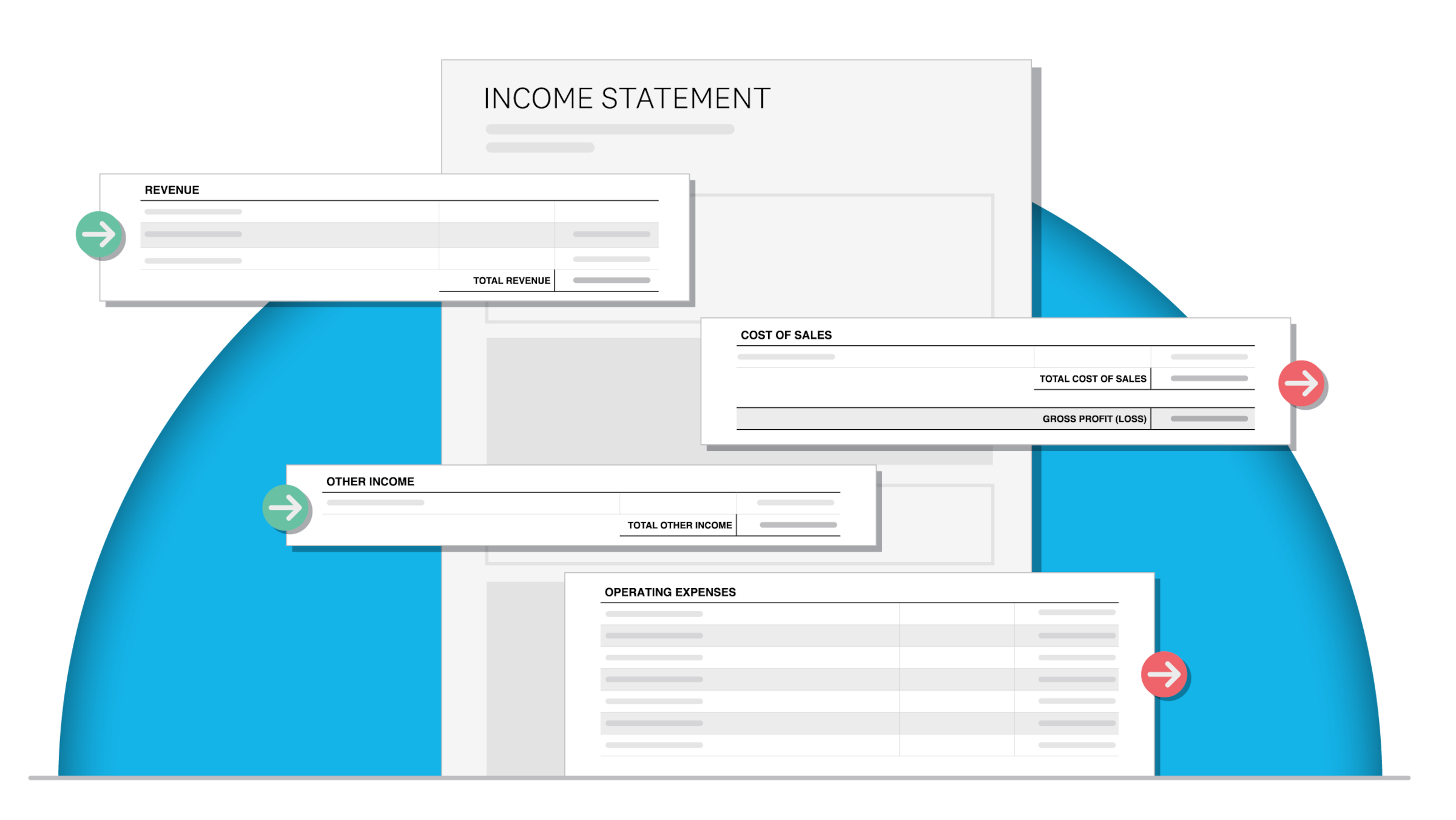Cost of sales: What it means and how to calculate yours
Learn how to calculate cost of sales to price smarter, protect margins, and forecast cash flow.

Written by Lena Hanna—Trusted CPA Guidance on Accounting and Tax. Read Lena's full bio
Published Thursday 20 November 2025
Table of contents
Key takeaways
• Calculate your cost of sales by including only direct expenses tied to creating and delivering your products or services, such as raw materials, direct labour, packaging, and shipping costs, while excluding general business overheads like rent, marketing, and administrative salaries.
• Use your cost of sales figure to establish your minimum viable pricing threshold, ensuring you price above this amount to maintain profitability and protect your profit margins from rising costs.
• Apply industry-specific formulas when calculating cost of sales, with service businesses focusing on labour and delivery costs, retailers tracking inventory and shipping expenses, and manufacturers including raw materials and production costs.
• Monitor your cost of sales regularly to identify opportunities for reduction through negotiating better supplier terms, improving operational efficiency, and optimising inventory levels to directly improve your profit margins.
What is cost of sales?
Cost of sales is the total expenses directly linked to delivering your products or services to customers. This includes everything from raw materials and labour to packaging and shipping costs. Understanding your cost of sales is essential because it determines your minimum pricing threshold and directly impacts your profit margins.
For most small businesses, cost of sales is the same as direct costs – expenses directly linked to the goods or services you sell. Don't confuse these with indirect costs, which are general business expenses not directly related to making your products or delivering your services.
Cost of sales varies by business. A bricks and mortar retailer pays for stock and packaging. A freelancer offering social media services pays for software subscriptions to deliver client work.
Why is cost of sales important?
Cost of sales matters because it sets your profit baseline – you need to price above this figure to stay profitable. Tracking cost of sales regularly helps you:
Key benefits:
- Price setting: Establishes your minimum viable price point
- Profit protection: Helps you spot margin threats early
- Cost control: Identifies which expenses are rising fastest
Types of costs to include:
- fixed costs such as employee salaries, rent and insurance
- variable costs such as raw materials, shipping and packaging
Regular monitoring helps you adjust prices before costs reduce your profit margins.
What to include in your cost of sales calculation
To get an accurate cost of sales figure, you need to be clear about what to include. According to Australian Accounting Standards, this includes all costs of purchase, conversion, and other expenses required to get inventory ready for sale.
Costs to include in your calculation are:
- The cost of raw materials or stock you purchased
- Wages for the staff who directly make your products or deliver your services
- Other direct costs, like shipping for materials or software needed to do the work
You also need to know what to leave out. General business running costs, also called indirect costs or overheads, don't belong in your cost of sales. Official accounting standards confirm that administrative overheads and selling costs are examples of costs excluded from inventory calculations.
Be consistent in what you include. This makes your reports reliable and helps you make better business decisions.
Cost of sales vs. expenses
Cost of sales includes only expenses directly tied to creating and delivering your products or services. Business expenses cover everything else needed to run your company.
Cost of sales examples:
- Raw materials and inventory
- Direct labour costs
- Packaging and shipping
- Payment processing fees
Business expenses examples:
- Marketing and advertising
- Office rent and utilities
- Administrative salaries
- Professional services (accounting, legal)
To improve profit margins, focus on reducing cost of sales. If you want to lower overall expenses, look at general business costs.
How to calculate cost of sales in different industries
Different business types need different cost of sales calculations. Service businesses focus on labour and delivery costs. Retailers track inventory and shipping. Manufacturers include raw materials and production expenses.
Cost of sales example formula for service businesses
Service businesses include all input costs, such as employees who deliver services and the facilities they use. Don't include back-office employees in cost of sales. Travel and equipment costs may not apply, for example, if you work from home.
Cost of sales example formula for retailers
Retailers can use this cost of sales formula for inventory accounting. An ecommerce business might choose to add shipping and transaction fees, which are common for every retail sale.
Cost of sales example formula for manufacturing
Manufacturers have raw materials and production costs to consider in their cost of sales calculations. A manufacturer might choose not to include warehousing or freight if they see these as operating expenses.
Cost of sales examples
For borderline expenses, ask: does this cost directly help you create or deliver your product or service?
Common grey areas:
- Sales commissions: Include if tied to specific sales, exclude if salary-based
- Equipment maintenance: Include if used exclusively for production, exclude if shared across business
- Freight costs: Include delivery to customers, exclude receiving inventory
Be consistent. If you change how you categorise costs, your tracking becomes unreliable.
Retail business example
So, what's the cost of sales for a retail business?
The owner of a homeware store uses the cost of sales formula for a new item – handmade pottery cups – to set a competitive price.
The owner buys the cups from a supplier for £5 each. Shipping to the store costs £2. An employee puts the cups on the shelves and helps customers, which costs £3 per cup.
So the total cost of sales per cup is £10. For a 50% profit margin, the store owner settles on a retail price of £15 per handmade cup.
Simplify your cost tracking with Xero
The costs of running a business and making a sale change often. If you have a simple way to monitor and manage your costs, you can stay in control.
With Xero Projects job costing, you get a live view of your income and outgoings, so you always know the state of your finances.
You can also do deeper financial analysis using analytics and reporting features. View cash flow projections, income and expenditure reports, and a range of financial statements and calculations to keep you in control of your numbers.
FAQs on cost of sales
Here are answers to some common questions about cost of sales.
How can I reduce my cost of sales?
- negotiate better supplier terms
- improve operational efficiency
- optimise inventory levels
Key strategies:
- secure volume discounts or extended payment terms
- automate repetitive tasks to reduce labour costs
- avoid overstocking by using demand forecasting tools
- use specialists for one-off tasks instead of hiring full-time staff
- invest in tools that reduce manual work and errors
How does the cost of sales affect profitability?
Cost of sales directly affects your profit margins – when you lower your costs, you keep more profit from each sale.
The impact: If your cost of sales is £90,000 on £100,000 revenue, you keep £10,000 (10% margin). If you reduce costs to £70,000, you keep £30,000 (30% margin).
The balance: Keep costs low enough for healthy profits while maintaining quality for your customers.
What's the difference between cost of sales and cost of goods sold?
Cost of sales and cost of goods sold (COGS) are nearly identical – both measure direct costs of delivering products or services to customers. The choice depends on your business type.
When to use cost of sales:
- Service businesses (includes delivery and commission costs)
- Mixed product and service companies
When to use COGS:
- Pure product businesses (focuses on manufacturing and inventory costs)
- Retailers buying and reselling goods
Both calculations help you see your profit margins and set prices.
Is cost of sales an expense or asset?
Cost of sales is an expense, not an asset. You record it on your income statement (or profit and loss statement) and subtract it from your revenue to calculate your gross profit.
Unsold inventory is an asset on your balance sheet because it has future economic value. When you sell that inventory, its cost moves from the balance sheet to the income statement as cost of sales.
Small business continues to adapt and grow*
Read the full report for Xero's small business insights focusing on several core performance metrics, including sales growth, jobs, time to be paid, and late payments.
AU sales:+3.7%*
Small business sales grew an average 3.7% y/y in the three months to September. Published 31 October 2024.

Disclaimer
Xero does not provide accounting, tax, business or legal advice. This guide has been provided for information purposes only. You should consult your own professional advisors for advice directly relating to your business or before taking action in relation to any of the content provided.
Start using Xero for free
Access Xero features for 30 days, then decide which plan best suits your business.